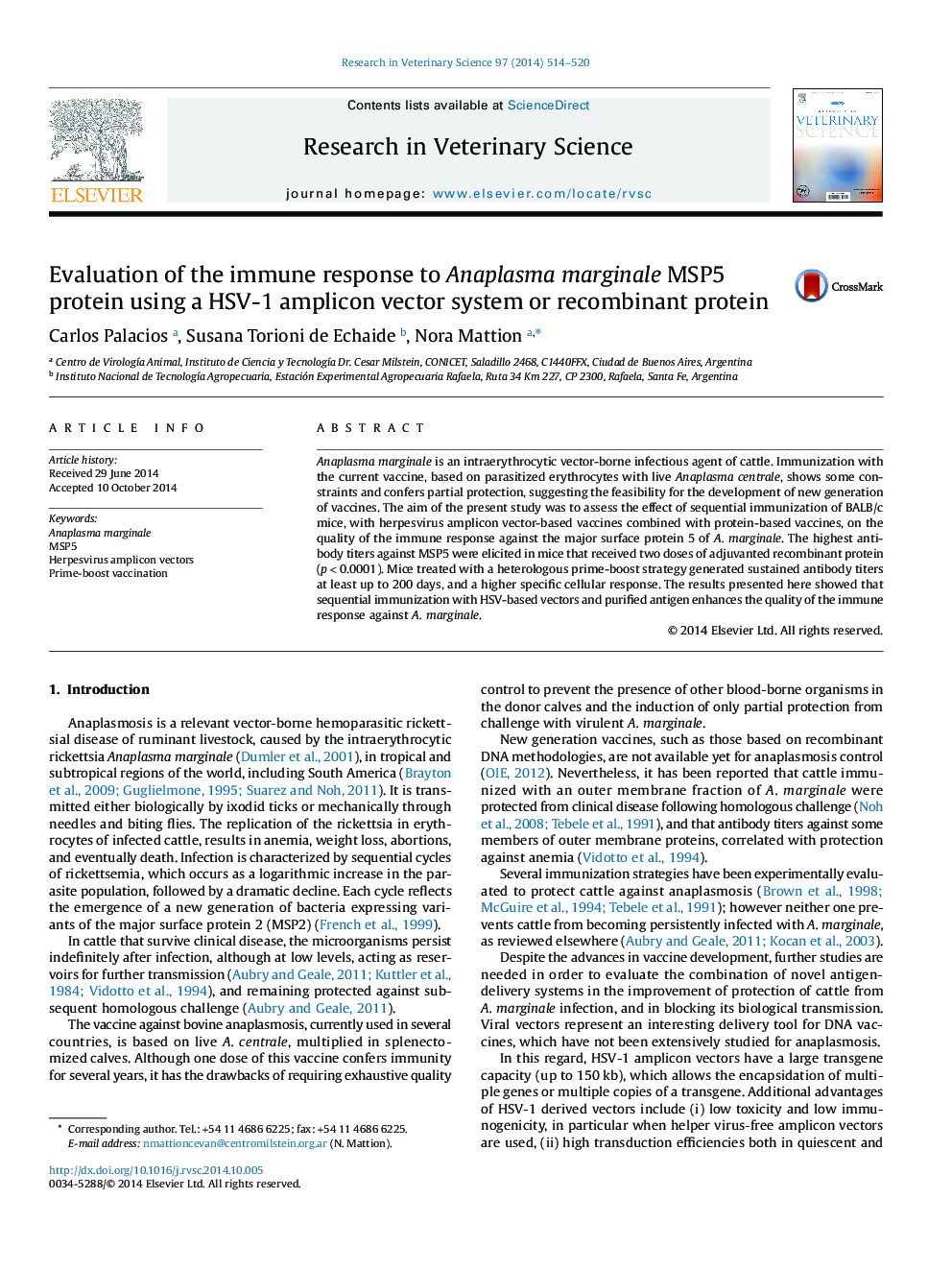| Article ID | Journal | Published Year | Pages | File Type |
|---|---|---|---|---|
| 5794824 | Research in Veterinary Science | 2014 | 7 Pages |
â¢HSV-1 amplicon vectors express in situ A. marginale MSP5 outer membrane protein.â¢Prime-boost vaccination was carried out with herpesvirus vectors and MSP5 protein.â¢Sustained antibody titers and specific cellular responses were generated in mice.â¢Mice vaccinated only with MSP5 amplicons showed significant cellular proliferation.â¢Anaplasma marginale is controlled at present using an unsafe and partial protecting blood-based vaccine.
Anaplasma marginale is an intraerythrocytic vector-borne infectious agent of cattle. Immunization with the current vaccine, based on parasitized erythrocytes with live Anaplasma centrale, shows some constraints and confers partial protection, suggesting the feasibility for the development of new generation of vaccines. The aim of the present study was to assess the effect of sequential immunization of BALB/c mice, with herpesvirus amplicon vector-based vaccines combined with protein-based vaccines, on the quality of the immune response against the major surface protein 5 of A. marginale. The highest antibody titers against MSP5 were elicited in mice that received two doses of adjuvanted recombinant protein (pâ<â0.0001). Mice treated with a heterologous prime-boost strategy generated sustained antibody titers at least up to 200 days, and a higher specific cellular response. The results presented here showed that sequential immunization with HSV-based vectors and purified antigen enhances the quality of the immune response against A. marginale.
